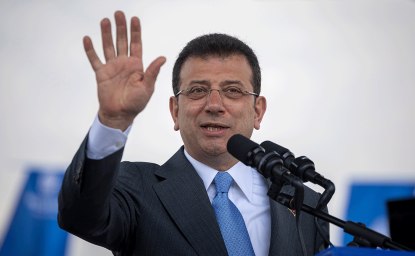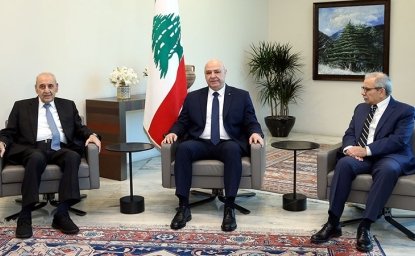U.S. Ambassadors to Mexico: The Relationship Through Their Eyes

Few relationships, if any, matter more to the United States than Mexico. It is a vital trading partner, a source of heritage for millions of Americans, a neighbor in an uncertain world, and a partner on numerous global challenges. It is also a relationship fraught with historical conflict, significant economic disparities, and a persistent cultural divide. Mexicans and Americans need each other like never before, and the policies and societies in the two countries are deeply intertwined. However, reaching understanding on the key issues that affect both countries is never easy. As the two countries face the twenty-first century, getting their shared challenges right – economic integration, migration, and security –, and coordinating effectively on global challenges from climate change to economic policy will be critical to the well-being of millions of citizens in both countries.
The role of the U.S. ambassador in Mexico in moving this relationship forward has always been particularly important for setting the overall tone of engagement. Some have speculated that the U.S. ambassador is a kind of “proconsul” who sets the key agenda items in the relationship. Others have seen the ambassador as a mere representative of larger U.S. interests formulated in Washington. To date, however, we have never had a first-hand account of how the U.S. ambassadors see their own role in the relationship. In this publication, Dolia Estévez has produced an inside look at this role in the words of the former U.S. ambassadors to Mexico. It proves to be a treasure-trove of insight into not only the ambassador’s role, but also how the relationship itself has worked at key junctures from an inside perspective.
It turns out that the ambassadors have been neither proconsuls nor simple instruments of larger political designs. Each has imprinted his own personal style on the job, bringing different strengths and weaknesses to the diplomatic dance between the two governments. But each has also had to operate within the constraints of larger policy designs set by the two governments and respond to unexpected crises. Indeed, if anything, the U.S. ambassadors’ in Mexico most important role may actually be in trying to manage and give some semblance of coherence to themultiple tracks of engagement between the two countries.
Especially as the policy worlds of the two countries have become increasingly more engaged with each other, ambassadors spend much of their time managing very different strands of the relationship each with its own dynamics – relations on environmental issues,trade, security, migration, and agriculture; differing priorities from executive branch agencies, Members of Congress, governors, mayors, business leaders, and NGOs. They try to make sure the way these pieces work together fits into the broader policy framework, and they try to keep track of the multiple direct bilateral encounters as they take place.
Much of this work is routine – keeping in touch with the right people, weighing in on policies that affect the relationship, and smoothing over communications. However, there have been more than a few moments of tension, crisis, and creativity in the relationship between the two countries when the ambassador’s personal skill for reconciling differing agendas and complicated personalities can prove crucial. These have ranged from the NAFTA negotiations to the peso crisis, in the 1990s, to negotiations over migration and security cooperation in this decade. Ambassadors have often played the critical role in setting the tone and the priorities in these crucial moments. In other times, too, they are almost always a crucial element – often the most important one for the U.S. government – in creating a framework for the managing the relationship well.
What emerges in this publication is a nuanced portrait of the individuals who have been tasked with serving as the key link of the U.S. government with Mexico. Dolia Estévez's effort to bring their memories and their perspectives to light helps illuminate a little known part of the political relationship between the two countries. It also chronicles a changing relationship between these countries from "distant neighbors" to "intimate strangers," who are deeply dependent on one another and yet are only still getting to know one another well enough to manage the relationship.
Author


Mexico Institute
The Mexico Institute seeks to improve understanding, communication, and cooperation between Mexico and the United States by promoting original research, encouraging public discussion, and proposing policy options for enhancing the bilateral relationship. A binational Advisory Board, chaired by Luis Téllez and Earl Anthony Wayne, oversees the work of the Mexico Institute. Read more

Explore More
Browse Insights & Analysis
Greenland’s New Governing Coalition Signals Consensus

Myanmar’s Junta and the 2026 Elections: A Fig Leaf for Legitimacy?

